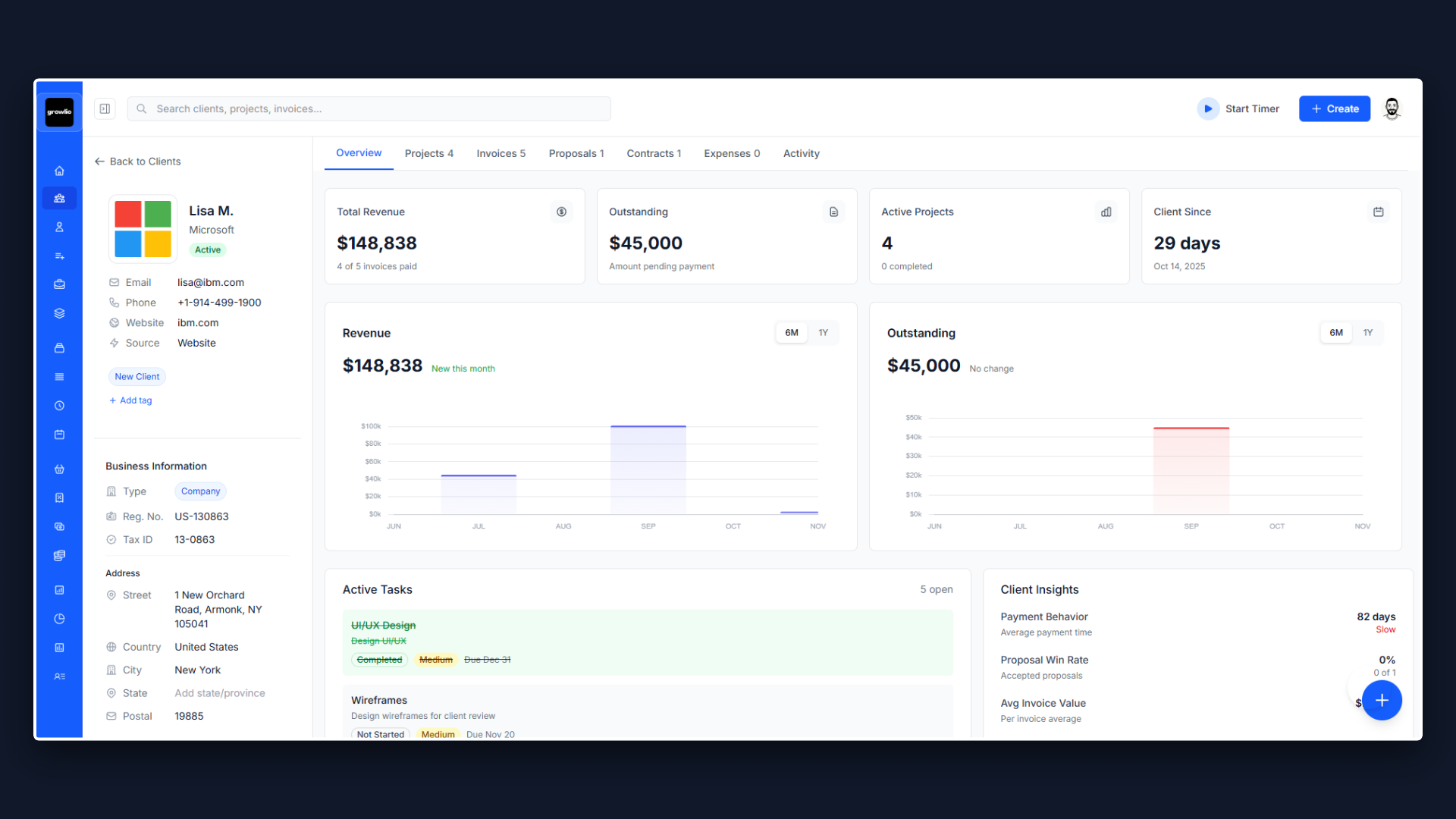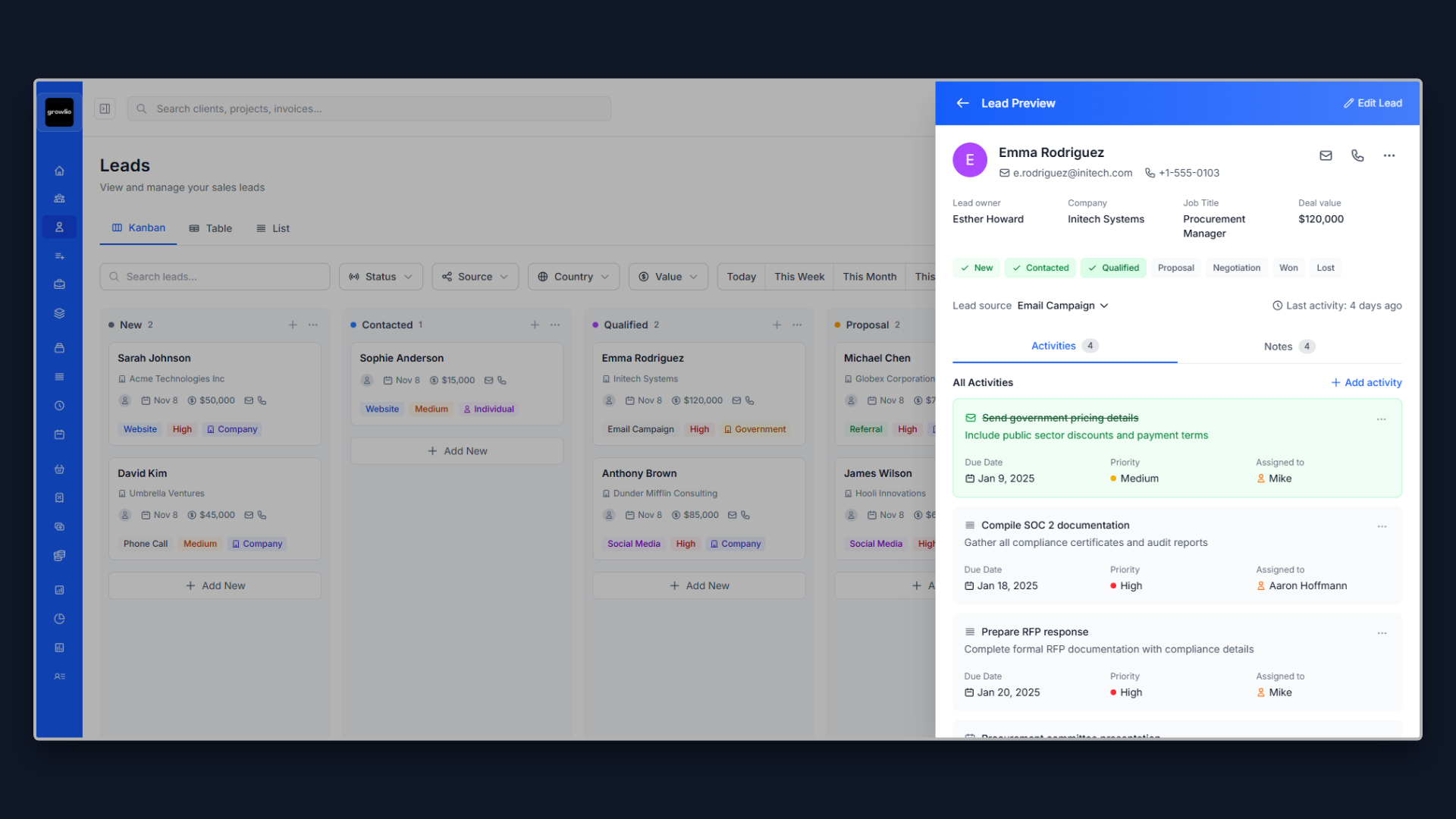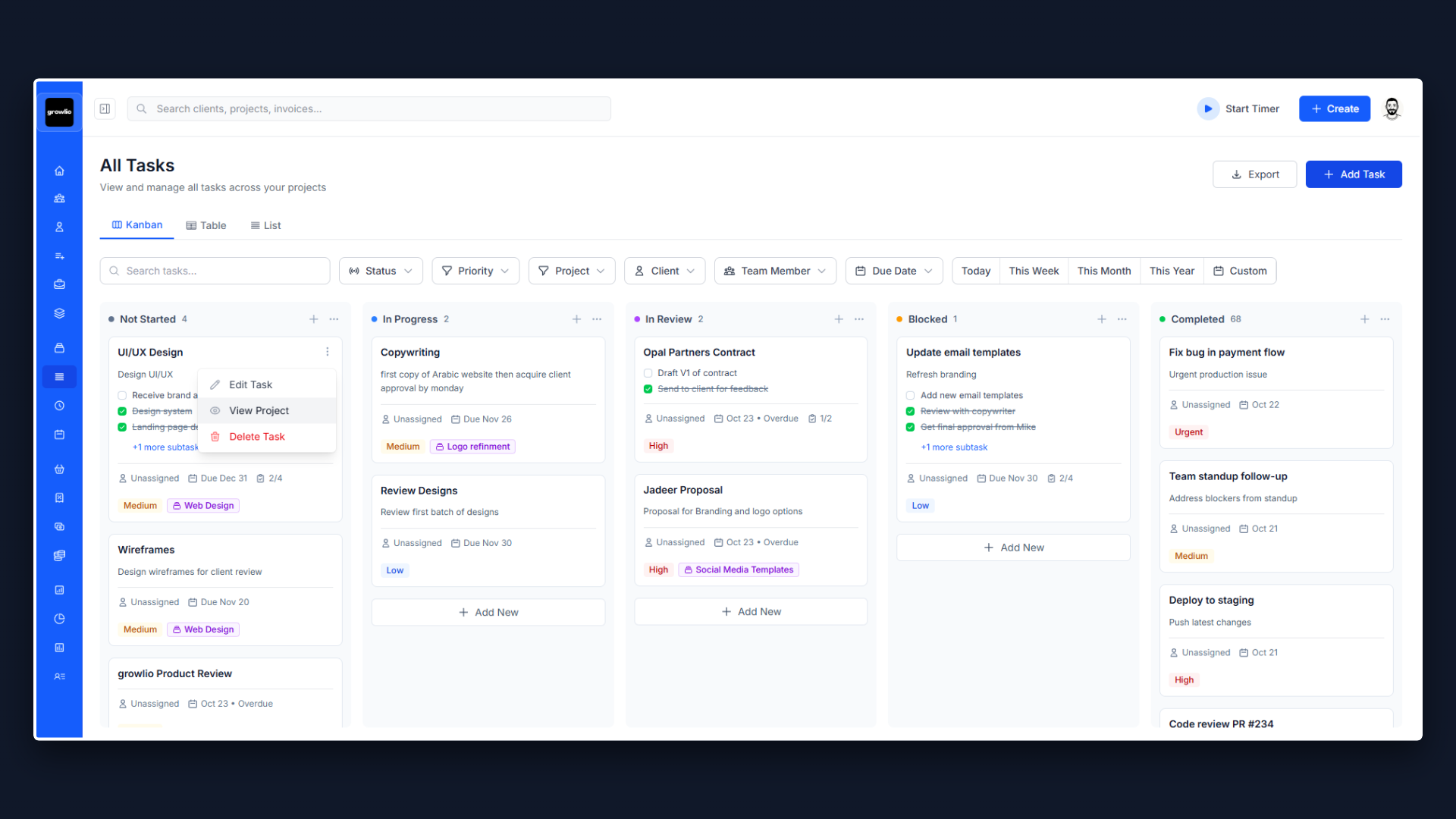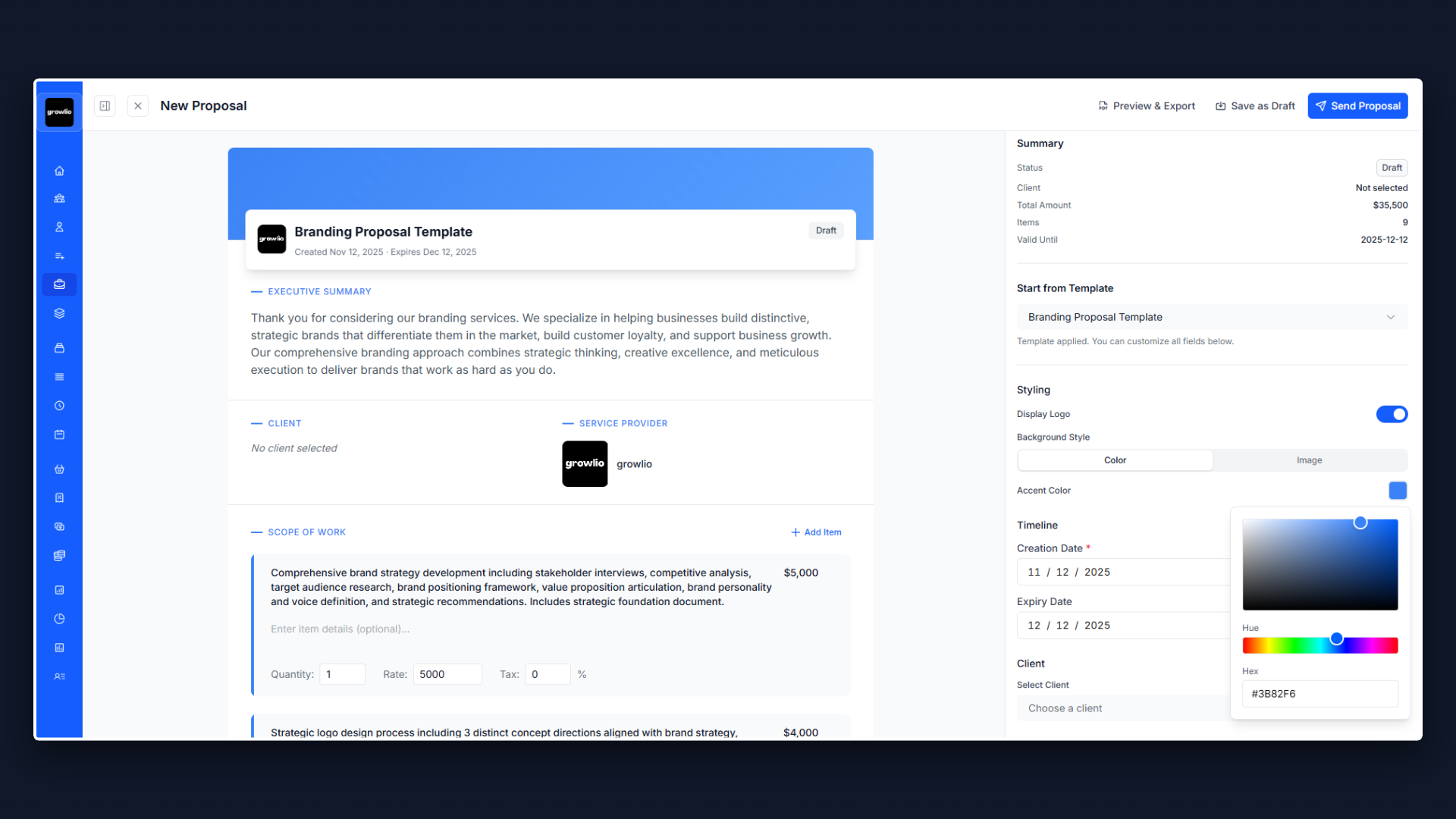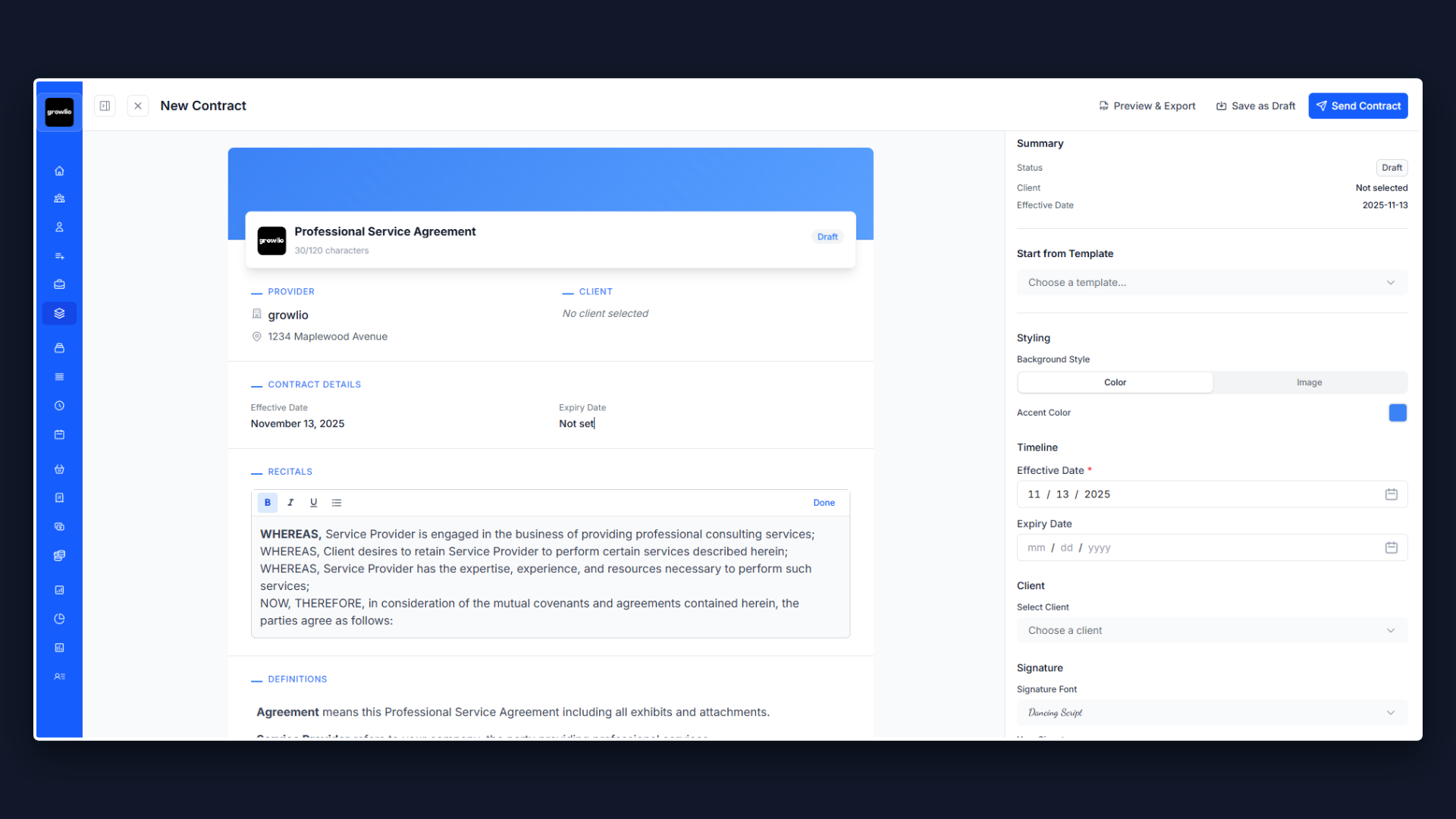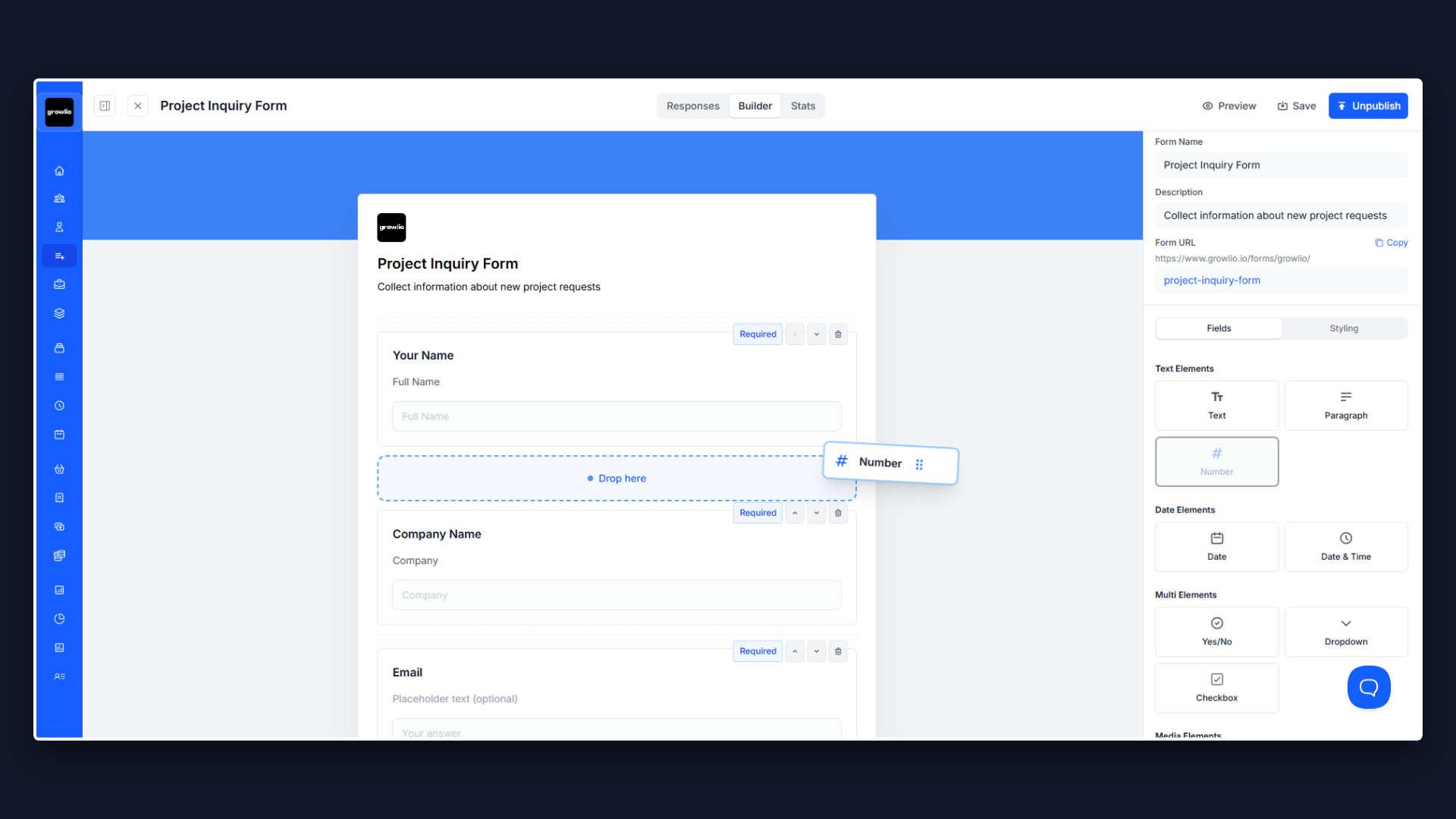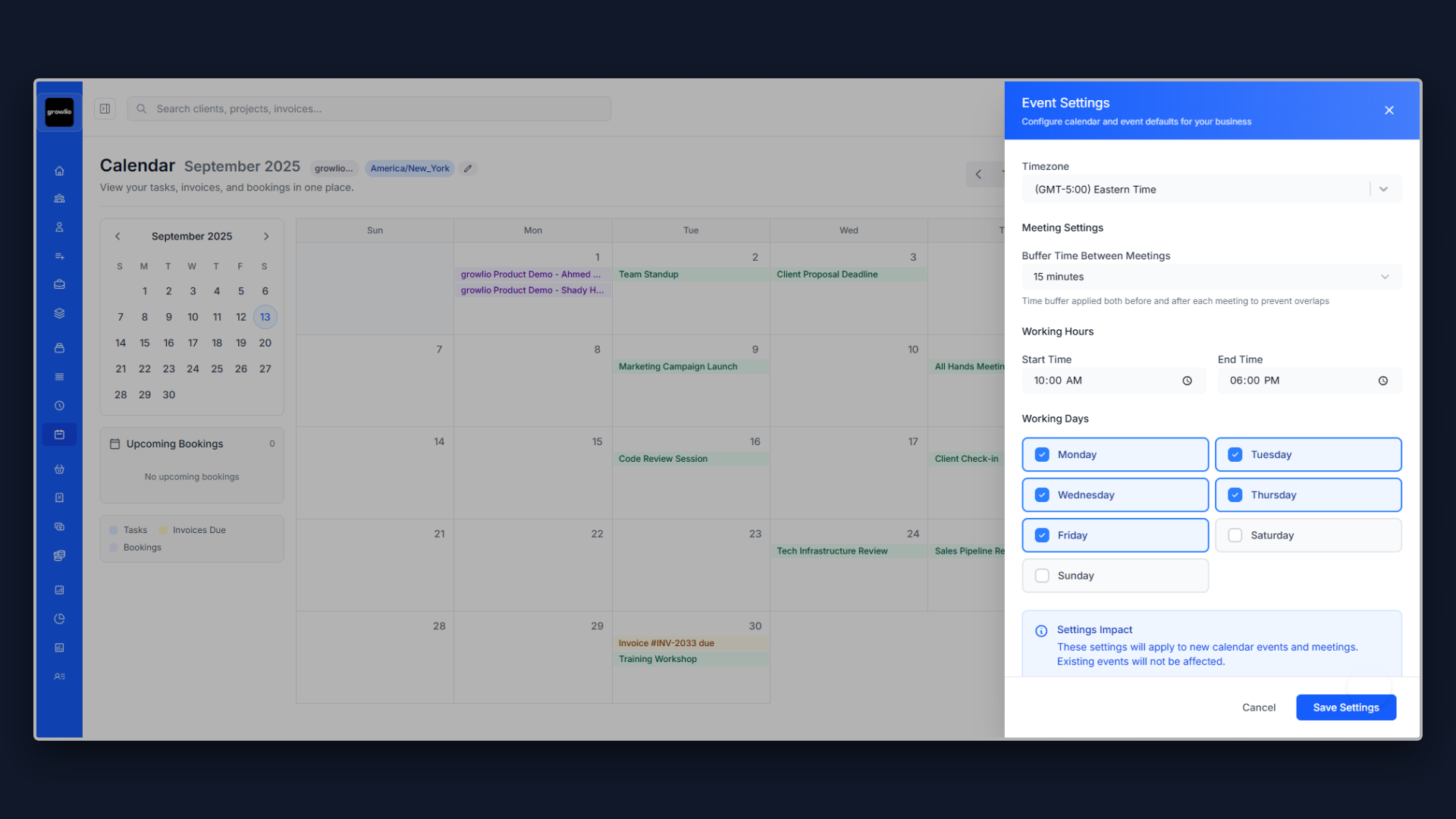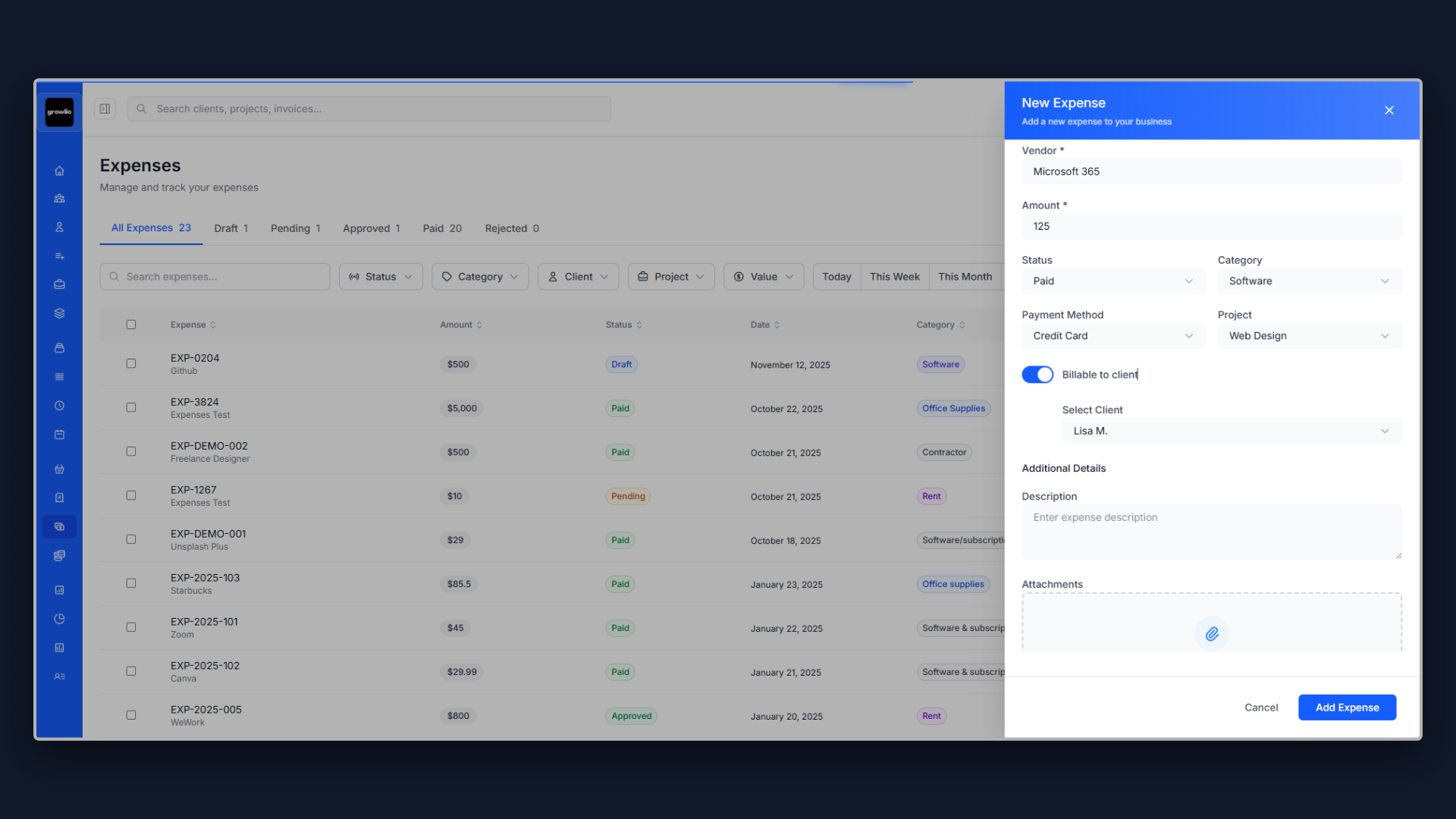Why Your Social Media Proposal Determines Your Success
Social media marketing is now a $300 billion global industry, with 5.1 billion active social media users worldwide spending an average of 2.5 hours daily on social platforms. Yet despite this massive opportunity, most social media marketers struggle to win profitable contracts because their proposals fail to demonstrate business value beyond vanity metrics.
Here's the brutal truth: clients don't care about followers, likes, or impressions unless you connect these metrics to revenue. The social media consultants winning the best clients aren't necessarily creating the most creative content—they're writing proposals that clearly link social media activity to business outcomes like lead generation, customer acquisition, and sales growth.
Your social media proposal isn't just describing what you'll post and when. It's a strategic business document that proves you understand your client's business goals, target audience, and competitive landscape—and that you have a data-driven methodology for turning social media presence into measurable business results. Get this right, and you'll close contracts 3-5x larger than consultants still pitching "we'll post 3 times per week and grow your followers."
1. Lead With Their Dormant Social Opportunity, Not Your Services
The biggest mistake in social media proposals is leading with your services: "We offer content creation, community management, social media advertising..." Your prospect doesn't care about your services until you've shown them why they need social media marketing in the first place.
Start by quantifying their missed opportunity: "Our analysis of your industry's social media landscape reveals your target audience is highly active across Instagram, LinkedIn, and Facebook. Your top 5 competitors collectively generate 245,000 monthly social media impressions and approximately 8,500 monthly clicks to their websites from social channels. Meanwhile, your current social presence generates only 12,000 impressions and 180 clicks—representing just 5% of the available social traffic in your market."
Connect social metrics to business impact: "Based on your website's average conversion rate of 2.3% and customer lifetime value of $3,800, your competitors are generating an estimated 195 leads per month from social media, worth approximately $741,000 in annual customer value. You're generating approximately 4 leads monthly, capturing less than 2% of this opportunity."
Address their current reality: "Your social profiles exist but remain largely dormant. Your most recent Instagram post is 47 days old, with an engagement rate of 0.8%—far below your industry average of 3.2%. Your LinkedIn company page has 240 followers but generates almost no engagement or traffic. These dormant assets represent millions of dollars in unrealized value."
This approach creates urgency by quantifying what they're losing every month they delay investing in professional social media marketing.
2. Include a Social Media Audit Demonstrating Your Expertise
Nothing builds credibility faster than showing you've already analyzed their social presence and identified specific improvement opportunities.
Current Performance Audit: Profile completeness and optimization gaps (missing bio information, poor profile images, lack of links), posting frequency and consistency issues, engagement rates compared to industry benchmarks, audience demographics vs. target customer profile, traffic generation to website (or lack thereof), competitor comparison showing where they lag behind.
Content Analysis: Content types and formats currently used (and not used), messaging consistency with brand voice and positioning, visual quality and professional appearance, call-to-action usage and effectiveness, hashtag strategy and performance, content that resonated vs. content that flopped.
Audience Insights: Current follower/audience demographics, ideal customer presence on each platform, competitor audiences you could target, engagement patterns (when audience is most active), follower growth trends (stagnant, declining, or growing).
Platform-Specific Opportunities: Instagram: opportunities for Reels, Stories, Shopping features, influencer collaborations. Facebook: group opportunities, event promotion, local business features, ad targeting options. LinkedIn: thought leadership opportunities, employee advocacy potential, B2B networking and lead generation. TikTok/YouTube: short-form and long-form video content opportunities. Twitter/X: real-time engagement and industry conversation participation.
This comprehensive audit proves you've invested time understanding their specific situation and demonstrates the depth of expertise they'll be hiring.
3. Present a Multi-Platform Strategy Aligned With Business Goals
Too many social media proposals treat all platforms the same: "We'll post daily on Instagram, Facebook, LinkedIn, and Twitter." This spray-and-pray approach wastes resources and dilutes impact.
Explain your strategic platform selection: "Based on your target audience analysis and business goals, we recommend focusing resources on three primary platforms where your ideal customers are most active and engaged." Detail platform-specific strategies:
Instagram (Primary Platform - 40% of effort): Why: Your target demographic (women 25-45) spends average 32 minutes daily on Instagram. Strategy: Visual storytelling showcasing your products in lifestyle contexts, educational Reels demonstrating product uses and benefits, Stories for behind-the-scenes and real-time engagement, Shopping features enabling direct purchases, influencer partnerships for expanded reach. KPIs: Grow to 15,000 engaged followers in 12 months, achieve 4-6% engagement rate, drive 2,500 monthly website clicks, generate 100+ monthly DM conversations (sales opportunities).
Facebook (Secondary Platform - 35% of effort): Why: Broader audience including older demographics, strong local business features, robust advertising platform. Strategy: Community building through Facebook Group for customers, event promotion and registration, customer testimonials and user-generated content, targeted advertising to custom and lookalike audiences, live videos for product launches and Q&A sessions. KPIs: Build group to 1,000+ active members, drive 1,500 monthly website clicks, generate 50+ monthly leads through ads, maintain 3%+ engagement rate.
LinkedIn (Tertiary Platform - 25% of effort): Why: B2B networking, thought leadership, employee recruitment, industry credibility. Strategy: Thought leadership articles from founders, company culture and employee spotlights, industry insights and trend analysis, employee advocacy program amplifying reach, strategic networking and partnership development. KPIs: Grow to 3,000+ followers, drive 500 monthly website clicks, generate 20+ monthly B2B leads, establish founder as industry thought leader.
This strategic approach shows you're allocating resources intelligently based on where they'll generate the best ROI, not just posting everywhere for the sake of presence.
4. Detail Your Content Strategy and Creation Process
Clients need to understand what content you'll create, why you're creating it, and how it advances their business goals. Don't just promise "30 posts per month"—explain the strategic content mix.
Introduce your content framework: "We use a strategic content mix designed to balance multiple objectives: engagement, education, conversion, and community building. Our recommended monthly content distribution:" Educational Content (40%): How-to guides and tutorials, industry insights and trends, tips and best practices, answering common customer questions, problem-solving content addressing pain points. Purpose: Build authority, provide value, attract new audience, support SEO.
Engagement Content (25%): Questions and polls encouraging interaction, user-generated content and customer features, behind-the-scenes and company culture, trending topics and timely commentary, interactive content (quizzes, challenges). Purpose: Build community, increase algorithmic reach, humanize brand, encourage conversations.
Promotional Content (20%): Product launches and announcements, special offers and limited-time deals, case studies and customer success stories, event promotion and registration, direct calls-to-action for purchases or inquiries. Purpose: Drive conversions, generate leads, increase sales.
Brand Building Content (15%): Company values and mission, social responsibility initiatives, team spotlights and culture, customer appreciation and testimonials, milestone celebrations. Purpose: Build emotional connection, differentiate from competitors, attract talent, strengthen brand loyalty.
Detail your content creation process: "Content Calendar: Developed monthly with strategic themes aligned to business goals and seasonal opportunities. Creation: Professional graphic design, photography, and copywriting ensuring brand consistency and quality. Approval: Submit content calendar and samples for your review and approval before scheduling. Scheduling: Strategic timing based on audience activity patterns and platform algorithms. Monitoring: Real-time monitoring for comments, messages, and engagement opportunities."
This level of strategic detail demonstrates professionalism and gives clients confidence you have a systematic, thoughtful approach—not just winging it.
5. Address Community Management and Engagement Strategy
Many social media proposals focus on content creation and ignore community management—one of the highest-value activities that builds relationships and drives conversions.
Explain your community management approach: "Great content attracts attention, but community management converts attention into relationships and relationships into customers. Our comprehensive community management includes:" Response Management: Respond to all comments within 2 hours during business hours, engage meaningfully with user-generated content and brand mentions, acknowledge positive feedback and thank customers for support, address concerns and negative feedback professionally and promptly, identify and escalate customer service issues appropriately.
Proactive Engagement: Daily engagement with target audience content (liking, commenting on potential customers' posts), building relationships with industry influencers and complementary brands, participating in relevant conversations and trending topics, identifying and engaging brand advocates and loyal customers, monitoring brand mentions and joining conversations about your company.
Conversation Starters: Strategic questions and polls encouraging audience participation, responding to comments with follow-up questions to deepen engagement, creating opportunities for user-generated content, hosting Q&A sessions and live interactions, featuring community members and customer stories.
Crisis Monitoring: Monitoring for negative sentiment or emerging issues, rapid response protocol for potential PR problems, escalation procedures for serious concerns, reputation management and damage control when needed.
Set expectations: "Community management is often where social media marketing transitions from awareness to sales. We've seen clients generate 30-40% of their social media-attributed revenue from direct message conversations and comment interactions. This is a priority, not an afterthought."
This emphasis on engagement differentiates you from content-only services and shows you understand that social media is inherently... social.
6. Explain Your Social Media Advertising Strategy
Organic social media reach is declining across all platforms. Address paid advertising as a critical component of modern social media marketing.
Present the reality: "Organic reach on Facebook averages just 5.2% of your audience—meaning only 1 in 20 followers see your posts. Instagram organic reach is similarly declining. While we'll maximize organic performance through strategic content and engagement, paid advertising is essential for reaching your full audience and acquiring new customers cost-effectively."
Detail your advertising approach: Audience Development: Custom audiences from website visitors, email lists, customer databases, lookalike audiences modeling your best customers, interest and behavior-based targeting, retargeting audiences for abandoned carts and website visitors.
Campaign Types: Awareness campaigns introducing brand to new audiences, engagement campaigns building community and social proof, traffic campaigns driving website visits, lead generation campaigns capturing contact information, conversion campaigns driving sales and revenue.
Creative Strategy: A/B testing multiple ad variations, video content for higher engagement, user-generated content for authenticity, dynamic product ads for e-commerce, carousel ads showcasing multiple products/features.
Budget Management: Recommended monthly ad budget: $2,000-$5,000 (separate from management fees), strategic budget allocation across campaign objectives, continuous optimization based on performance data, transparent reporting on ad spend and return.
Project results: "Based on industry benchmarks and our experience, a $3,000 monthly ad budget typically generates: 150,000-250,000 impressions reaching new audiences, 40-80 leads at $37-$75 cost per lead, 15-30 new customers at $100-$200 customer acquisition cost, 3:1 to 5:1 return on ad spend within 3-6 months."
This integrated organic + paid approach reflects modern social media marketing reality and positions you as sophisticated versus agencies still relying solely on declining organic reach.
7. Define Clear Metrics and Reporting
The death of many social media contracts is lack of clear ROI demonstration. Define exactly how you'll measure and report success.
Establish metric hierarchy: Vanity Metrics (Reported but Not Primary KPIs): Followers/audience size, total impressions, total engagement (likes, comments, shares). Important context but not business objectives.
Engagement Metrics (Secondary KPIs): Engagement rate (engagement / reach), audience growth rate, video view completion rates, story/Reel views and interactions, share rate and viral coefficient. Indicate content quality and audience interest.
Traffic and Conversion Metrics (Primary KPIs): Website clicks from social media, landing page conversion rate from social traffic, leads generated via social channels, cost per lead from paid social, customer acquisition from social media, revenue attributed to social media, return on ad spend (ROAS), customer lifetime value from social-acquired customers.
Detail your reporting structure: Weekly Quick Reports: Key metric dashboard, content performance highlights, ad performance and budget pacing, engagement opportunities and notable interactions.
Monthly Comprehensive Reports: All key metrics with month-over-month and goal comparison, content performance analysis (what worked and why), audience growth and demographic insights, traffic and conversion data, ad campaign results and ROI, competitor activity and benchmarking, strategic recommendations and next month's priorities, 30-minute review call to discuss results and strategy.
Quarterly Business Reviews: Comprehensive performance analysis, ROI and business impact assessment, strategic recommendations for next quarter, content and platform strategy refinement, competitive landscape updates.
Provide dashboard access: "You'll have 24/7 access to a real-time dashboard showing all key metrics, so you can monitor performance anytime without waiting for reports."
This rigorous measurement framework gives clients confidence you're focused on business results, not just creating content.
8. Include Social Media Marketing Case Studies
Concrete examples of results you've delivered make your promises credible and your pricing justified.
Case Study 1: E-commerce Fashion Brand
Challenge: Stagnant Instagram presence (3,200 followers, 1.1% engagement), minimal website traffic from social, zero sales attribution to social media.
Strategy: Implemented consistent visual brand aesthetic, created daily Reels showcasing styling tips, launched influencer partnership program, implemented Instagram Shopping, ran targeted conversion campaigns.
Results (9 months): Grew to 28,000 followers (775% increase), achieved 5.8% average engagement rate, drove 12,500 monthly website visits from Instagram, generated $47,000 monthly revenue directly attributed to Instagram, 4.2:1 ROAS on social advertising.
Case Study 2: B2B Professional Services Firm
Challenge: Virtually no LinkedIn presence, struggling to generate inbound leads, competitors dominating thought leadership space.
Strategy: Developed LinkedIn thought leadership strategy for partners, created weekly educational content, built engaged LinkedIn Group for industry professionals, ran targeted LinkedIn lead generation ads.
Results (12 months): Grew company page from 180 to 4,200 followers, established partner as industry thought leader (articles averaging 15,000+ views), built LinkedIn Group to 850+ members, generated 340 qualified B2B leads at $85 cost per lead, closed $680,000 in new business directly from LinkedIn leads.
Case Study 3: Local Service Business (Restaurant)
Challenge: Awareness limited to existing customer base, difficulty attracting new customers, inactive social presence.
Strategy: Daily Instagram Stories showing menu items and behind-the-scenes, user-generated content from customer posts, Facebook events for special occasions, local influencer partnerships, geo-targeted Facebook ads.
Results (6 months): Grew Instagram from 890 to 6,700 followers, generated 2,800 monthly Instagram clicks to online ordering, increased monthly sales 34% (attributed significantly to social presence), built community of brand advocates sharing content, achieved 8:1 ROAS on local Facebook advertising.
These diverse examples prove you can deliver results across different industries and business models.
9. Address Content Ownership, Approval, and Collaboration
Prevent future conflicts by clearly defining how content creation, approval, and ownership work.
Detail your process: Content Development: We develop monthly content calendar with themes, topics, and strategic rationale. You review and approve calendar before content creation begins. We create content (graphics, copy, videos) based on approved calendar. You review content batch and provide feedback/approval before posting.
Approval Timeline: Content calendar delivered by 25th of preceding month for your review. Content drafts delivered by 5th of month for approval. Your approval expected within 3 business days to maintain posting schedule. Rush approvals available for timely/trending content opportunities.
Content Ownership: All content created for your brand becomes your property. You retain all rights to graphics, copy, videos, and creative assets. We retain examples in our portfolio with your permission.
Collaboration and Communication: Monthly strategy calls to align on goals and priorities. Shared content management platform for easy review and collaboration. Direct communication channel for time-sensitive opportunities or issues. Quarterly in-person or video meetings for strategic planning.
This clarity prevents the common friction points that damage client relationships and sets expectations for a smooth working partnership.
10. Make Getting Started Simple and Clear
Don't lose the sale because the next steps feel complicated or unclear. Make starting your engagement completely frictionless.
"Ready to transform your social media presence into a powerful business growth engine? Here's how we begin: Step 1: Sign and return this proposal by [date]. Step 2: Complete our client onboarding questionnaire (15 minutes) covering brand voice, target audience, goals, and assets. Step 3: We'll schedule a 90-minute strategy kickoff session within 3 business days. Step 4: Grant us access to your social media accounts and any relevant brand materials. Step 5: We'll deliver your first month's content calendar within 7 days for your review and approval. Step 6: Content creation and posting begin according to approved calendar, typically launching within 14 days of kickoff."
Address common questions: "What if I'm not happy with the content? We include unlimited revisions during the approval process to ensure you love every post. Can I cancel anytime? Our contracts are month-to-month after a 3-month initial commitment, so you're never locked into long-term obligations without proven results. What access do you need? We need admin/creator access to your social platforms and brand assets (logos, photos, style guides). You maintain ownership and control at all times."
Include simple approval: "Let's build your social media success: Signature: _____________ Date: _____________ Print Name: _____________ Company: _____________ Best phone number: _____________ Best email: _____________"
The simpler and clearer you make the starting process, the faster prospects commit and the sooner you begin delivering results.
Final Thoughts on Social Media Marketing Proposals
Social media marketing has evolved far beyond posting content and hoping for engagement. The consultants and agencies winning the best clients are those who position social media as a measurable, strategic business function that drives real revenue—and their proposals reflect this sophistication.
Your social media proposal should quantify the opportunity they're missing with dormant or amateur social presence, demonstrate expertise through comprehensive audits and strategic platform selection, show how you'll create content that balances multiple business objectives, emphasize community management and engagement as revenue drivers, integrate paid advertising as essential to modern social media success, define clear metrics connecting social activity to business outcomes, and prove your capabilities with case studies showing real business impact.
Customize every proposal to the client's industry, target audience, and business model. Show you understand their customers and where those customers spend time online. Present a strategic, multi-platform approach that allocates resources intelligently. Connect every tactic to business objectives. And prove with data and examples that you deliver results beyond follower counts.
When you shift from selling "social media posting services" to selling "strategic social media marketing that drives measurable business growth," you'll win larger contracts, work with better clients, and deliver genuinely transformative results. Your proposal is the first post in this transformation—make it count.
